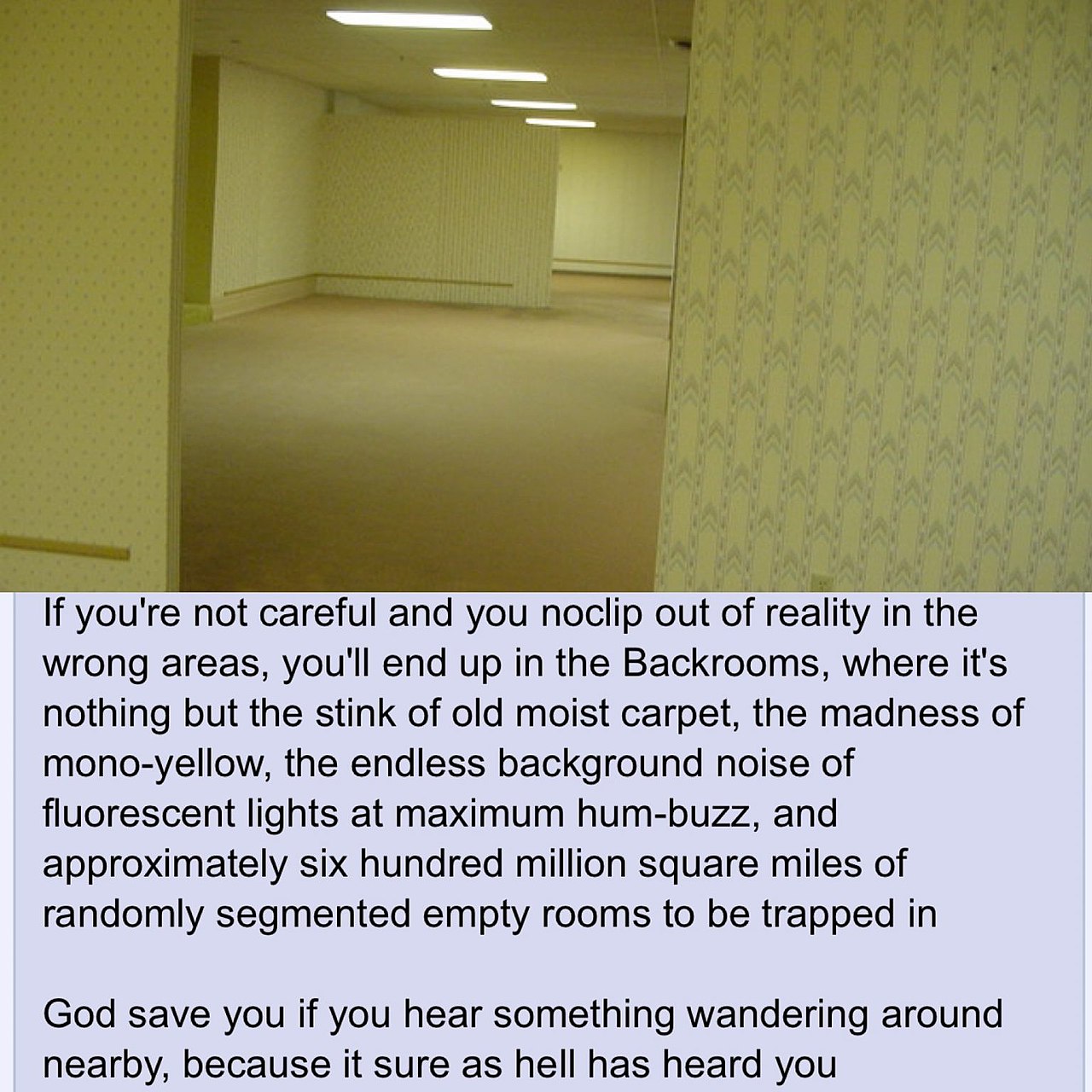Welcome to the Liminality Gallery!
"liminal spaces are empty or abandoned places that appear eerie, forlorn, and often surreal. Liminal spaces are commonly places of transition, pertaining to the concept of liminality." - (Wikipedia contributors, 2024)
The Origin of the "Liminal Space"
In 2019, a post was uploaded to 4chan depicting what came to be known as The Backrooms.

According to the anonymous author, "if you're not careful and you noclip out of reality in the wrong areas, you'll end up in the Backrooms, where it's nothing but the stink of old moist carpet, the madness of mono-yellow, the endless background noise of fluorescent lights at maxiumum hum-buzz, and approximately six hundred million square miles of randomly segmented empty rooms to be trapped in. God save you if you hear something wandering around nearby, because it sure as hell has heard you."
This text was accompanied by an off putting image of an empty room. The room is as the post describes, with yellow wallpaper and old carpeting as well as fluorescent lights. This image and post specifically would spark a horror subculture phenomenon.
Although the concept of the uncanny valley originated in the 1970s, it wasn't often applied to locations. The uncanny valley as a theory is most commonly used to refer to humanoid non-human things like robots or dolls. It wasn't until the coining of The Backrooms that a subculture began to form around the concept as applied to locations. It was around this time that the concept of the "liminal space" became a topic of interest for those online.
It was during the COVID-19 lockdowns of 2020 that the concept of the liminal space exploded into the mainstream.
What is a "liminal space?"
According to Wikipedia contributers, a "liminal space" is defined as "a place or state of change or transition; this may be physical (e.g. a doorway) or psychological (e.g. the period of adolescence). Liminal space imagery often depicts this sense of "in-between", capturing transitional places (such as stairwells, roads, corridors, or hotels) unsettlingly devoid of people. The aesthetic may convey moods of eeriness, surrealness, nostalgia, or sadness, and elicit responses of both comfort and unease."
During the COVID-19 lockdowns experienced in 2020, around the world people were experiencing their own examples of liminality. Human structures, often bustling with life, would be completely empty for months on end. The internet was flooded with examples. The news reported on the world outside, completely devoid of humanity. The signs of life were present in artificial structures, but the lack of a public pushed these locations squarely into the uncanny valley. It was during this time that online groups dedicated to the liminal space gained prominent attention from a world locked online.
What is anemoia?
It's known that a telling feature of the liminal space is its ability to invoke nostalgia. This in itself is fascinating because many of those experiencing this nostalgia are experiencing it from a location they've never been or a memory they don't have. This is known as "anemoia," defined as nostalgia for a time somebody never experienced.
What is The Liminality Gallery?
The Liminality Gallery is a collection of examples and information related to liminal spaces. This includes resources on where to find liminal spaces, what defines a liminal space, images of liminal spaces, and more. The Liminality Gallery is run by one person, and was started on the 20th of June in 2024.